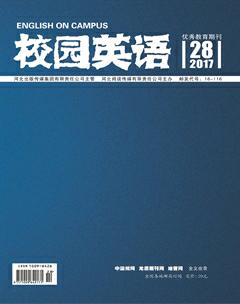The Characteristic Change of Cinderella in Persuasion
【Abstract】All books of Jane Austen show her Cinderella pattern, which is condemned by critics for its lack of diversity in characterization. It is also attacked by feminist critics for always anchoring their hopes in men. The thesis will focus on the development of Jane Austens feminist consciousness along the change of the characterizations of the heroine, Anne in her last novel Persuasion. It is a new type of Cinderella that shows Austens consummate skill and the maturity of her feminist consciousness.
【Key words】Cinderella; Persuasion; Feminism
Everyone is familiar with Cinderella. A young girl lives with her wicked stepmother and two half sisters. She has to bear the heavy drudgery and tears for not being allowed to attend the ball. Then her godmother helps her with magnificent dress and pumpkin carriage, and a pair of glass slipper. The show of Cinderella strikes the prince overwhelmingly and the prince comes to her rescue. The keynote to change her destiny is her own qualities. All in all, Cinderella is a princess in disguise.
1. Common Things Between Two Types of Cinderella
Jane Austen conceals her feminism by portraying a Cinderella-type heroine, Anne. The original Cinderella and Anne share something in common. Firstly, Cinderella is in family or social disadvantage, although she is the daughter of a rich man, she belongs to the lower class than the hero, and the hero always falls in love with her. Secondly, the heroines are good-natured, and in Austens presentation Anne shows inner quality rather than her physical beauty. Thirdly, they both lack the love of family. Mother either dies or plays a negative role and the father almost the outsider in their life. Being allowed no voice in the family, they are actually the nobody.
Anne undergoes the sufferings from her family. Her word has no weight;she is exactly a speaker who is unheard and a nobody in the family. Anne “with an elegance of mind and sweetness of character” deserves respect, but in her family “her convenience was always to give away”.
Annes love journey seemingly accords with the Cinderella model. But she has to hide her affection to Wentworth, because her loyalty to their love is suspected by him. Misunderstanding and deliberately hiding his feeling, Wentworth also brings torment to Anne.
2. A Unique Cinderella
Though Anne shares some miserable experiences with Cinderella, the core of them is different. She is a new type of Cinderella who contains the qualities that others lack. Anne is shining more in personality than in appearance.endprint
2.1 Rationality and Calmness
Austen shows Annes ability of dealing with crisis. She is the only one that remains sober in face of the accident in Lyme. When Louisa falls on the pavement, Wentworth loses his mind and his face “as pallid as Louisa”, Mary and Charles are immoveable with horror, Henrietta even loses her senses. It is Anne who stands out to handle all the things and gives the right direction. She naturally shows her masculine strength which is usually expected from men.
2.2 Loyalty to Love
Anne breaks up with Wentworth because of the persuasion from Lady Russell, she still loves Wentworth eight years later. At the age of 27, Anne encounters Wnetworth. This time, she constantly sticks to her own decision, and faithful to her own real emotion. She feels “equal to everything which she believed right to be done.” Such courage and affection prove with her ragaining felicity. Jane Austen portrays the growth of the heroine from innocence to maturity and tries to tell us that woman, as well as man, they make mistakes and also they have courage to correct them.
3. Conclusion
Austens artistic skill is more faithful to real life in Persuasion. Anne has no voice in her own family and suffers the inner loneliness. She also bears the pain of losing her love. Those seeming Cinderella plots pave the way for the change of Annes character. As a writer who challenges the tradition, Austen infuses the new elements into Cinderella, and makes her a assertive, initiative and rational modern woman. The change of Cinderellas characters also shows the historical process of the development of feminist consciousness, and the vicissitude of the process also points out how difficult the struggle is at the patriarchal society.
References:
[1]Austen,Jane.Persuasion[M].Oxford:Benediction Classics,2012.
[2]黃婷婷.《傲慢与偏见》与《劝导》中婚姻模式的对比研究[D].兰州大学,2011.
[3]胡齐放.简·奥斯汀小说《劝导》的女性主义解读[D].浙江大学,2004.
[4]张英.奥斯丁小说女性认识论析[D].吉林大学,2004.
作者简介:申媛枫(1994-),女,汉族,河南洛阳人,哈尔滨师范大学西语学院2016硕士,研究方向:英国文学。endprint

